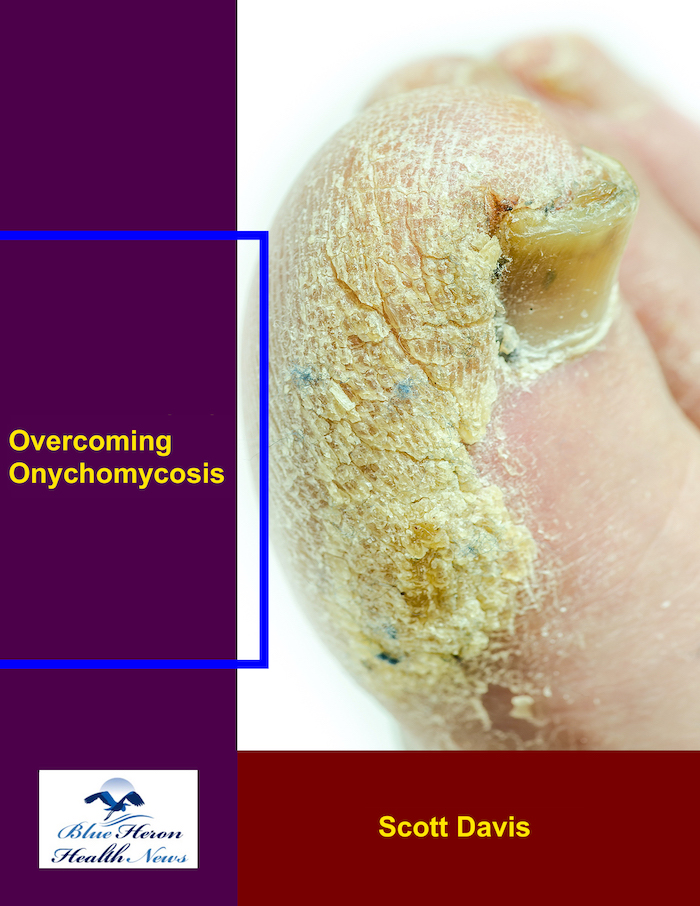
Overcoming Onychomycosis™ By Scott Davis If you want a natural and proven solution for onychomycosis, you should not look beyond Overcoming Onychomycosis. It is easy to follow and safe as well. You will not have to take drugs and chemicals. Yes, you will have to choose healthy foods to treat your nail fungus. You can notice the difference within a few days. Gradually, your nails will look and feel different. Also, you will not experience the same condition again!
What are the signs of successful treatment in onychomycosis?
Signs of successful treatment in onychomycosis (fungal nail infection) develop gradually, as nails grow out slowly. Full recovery can take 6 to 18 months depending on the severity and location (toenails grow slower than fingernails). Here are the key indicators that treatment is working:
✅ 1. Healthy Nail Growth
New nail at the base (cuticle area) appears:
Clear
Smooth
Uniform in color
Free from discoloration, crumbling, or thickening
The infected portion is pushed outward and eventually trimmed off as the nail grows.
✅ 2. No Progression of Infection
No new thickening, yellowing, or black spots.
No foul odor, pain, or nail detachment developing further.
✅ 3. Reduced Nail Discoloration and Debris
The nail becomes less yellow, brown, or white.
The chalky or crumbly material under the nail (subungual debris) lessens or disappears.
✅ 4. Restoration of Nail Texture
The nail surface becomes smoother, less brittle or ridged.
Shape starts to return to normal.
✅ 5. Absence of Symptoms
No pain or discomfort when wearing shoes or walking.
No itching, burning, or irritation around the nail bed or skin.
📌 Important Notes:
Lab confirmation (repeat fungal culture or microscopy) can verify cure if needed, especially before stopping oral antifungals.
Even after the fungus is cleared, damaged nails may take months to fully regrow and appear normal.
Preventive care should continue to avoid recurrence.
Summary
Signs of successful onychomycosis treatment include clear, healthy nail growth from the base, no worsening symptoms, and gradual improvement in nail appearance and texture. Patience and consistent care are key, as nails take time to fully regenerate.
Would you like a checklist or timeline to track nail recovery during treatment?
Treatment for onychomycosis varies depending on the type of infection, as each type involves different parts of the nail and may respond differently to medications. Here’s a breakdown of how treatment is tailored to the specific type of onychomycosis:
1. Distal Lateral Subungual Onychomycosis (DLSO)
Most common type; infection starts under the nail at the tip or sides.
Treatment:
Oral antifungals (e.g., terbinafine, itraconazole) are usually preferred due to deeper nail bed involvement.
Topical treatments may be added or used for mild cases.
Nail debridement (trimming/thinning) improves topical penetration.
2. White Superficial Onychomycosis (WSO)
Affects the surface of the nail plate, usually toenails.
Treatment:
Topical antifungals are often effective on their own.
Mechanical scraping may be used to remove infected superficial layers.
3. Proximal Subungual Onychomycosis (PSO)
Starts at the base of the nail, near the cuticle.
Can signal underlying immunosuppression (e.g., HIV).
Treatment:
Systemic oral antifungals are usually required because the fungus penetrates deeply from underneath the nail fold.
Evaluation for immune disorders is recommended.
4. Endonyx Onychomycosis
Fungus invades within the nail plate without nail bed involvement.
Treatment:
May respond to oral antifungals.
Topical treatment may be less effective alone due to internal nail location.
5. Total Dystrophic Onychomycosis
Advanced stage of infection; nail is thickened, crumbly, and often completely destroyed.
Treatment:
Combination therapy: oral antifungals + topical treatment + debridement.
Surgical or chemical nail removal may be considered in resistant or painful cases.
Summary Table:
Type Area Affected Common Treatment Approach
Distal Lateral Subungual Nail tip/sides & bed Oral antifungals ± topical, debridement
White Superficial Nail surface Topical antifungals, gentle scraping
Proximal Subungual Nail base/cuticle Oral antifungals, assess immune status
Endonyx Inside nail plate Oral antifungals
Total Dystrophic Entire nail destroyed Oral + topical + debridement ± removal
Final Note:
Accurate diagnosis (possibly including a nail biopsy or culture) is crucial for selecting the right treatment and improving success rates.
Would you like help identifying your type of onychomycosis or treatment options tailored to it?
Overcoming Onychomycosis™ By Scott Davis If you want a natural and proven solution for onychomycosis, you should not look beyond Overcoming Onychomycosis. It is easy to follow and safe as well. You will not have to take drugs and chemicals. Yes, you will have to choose healthy foods to treat your nail fungus. You can notice the difference within a few days. Gradually, your nails will look and feel different. Also, you will not experience